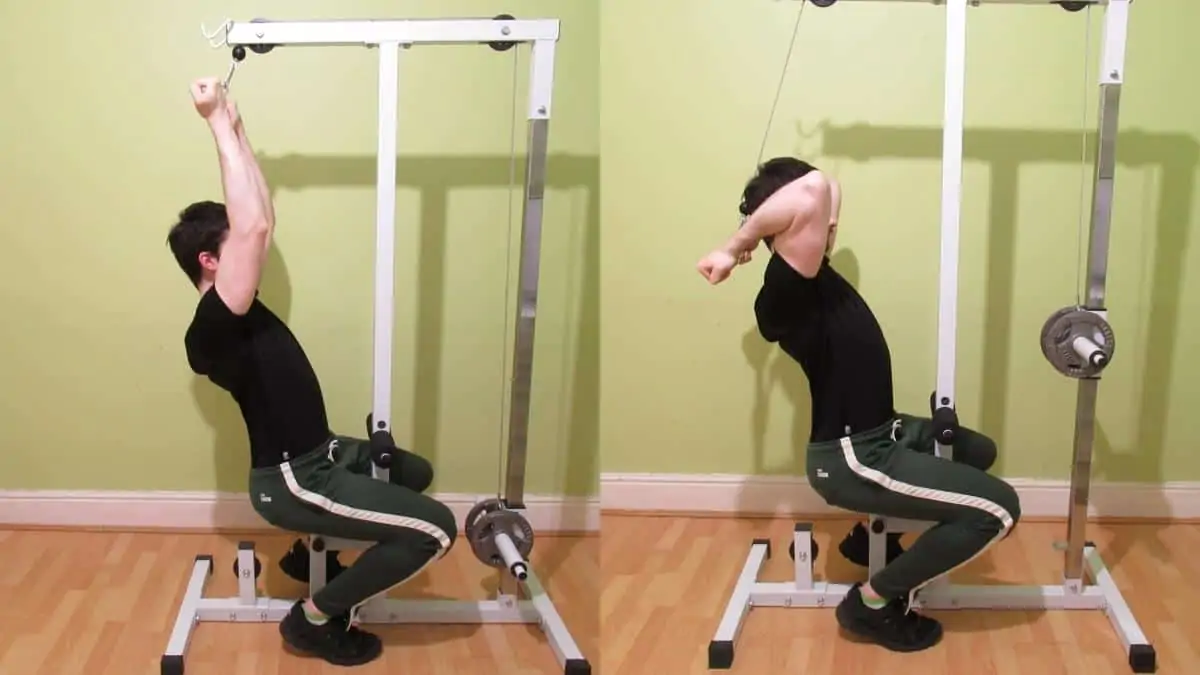To develop the bicep muscle to its fullest potential, you need to train it at all parts of its range of motion (ROM). In practice, this means that you need to do an exercise that works your biceps in their fully shortened anatomical position (the behind the head cable curl), a move that works them in the mid-rage (low cable curls), and a drill that trains the muscle in its lengthened position, like bayesian curls.
Behind the head cable curl exercise details
- Main Muscles: Biceps brachii
- Secondary Muscles: Forearm flexors, brachialis, brachioradialis
- Exercise Type: Strength
- Exercise Mechanics: Isolation
- Difficulty Level: Intermediate
- Equipment Needed: Lat pulldown, straight bar attachment
How to do a cable behind the neck curl

You can perform the cable behind the neck curl by kneeling under a high pulley and then curling the bar behind your head. However, for this demonstration, we’re going to be using the lat pulldown machine because it offers greater core stability that lets you focus on simply working your biceps.
- Attach a straight bar to a lat pulldown machine.
- Sit on the pulldown seat and grab the bar with a medium underhand grip.
- Arch your upper back and lean your torso back slightly.
- Curl the bar behind your head and squeeze your biceps forcefully.
- Keep curling until your biceps feel maximally contracted.
- Slowly release the bar by letting your biceps stretch out.
- Repeat the motion for 3-4 sets of 12-15 reps.
Behind the head cable curl benefits
The behind-the-head cable curl is an old-school bodybuilding exercise that’s rarely performed today because most lifters prefer doing the cable concentration bicep curl and other more obvious movements. However, by bucking the trend, you can build biceps that stand out because no other exercise provides a peak contraction like the behind the neck cable curl.
Powerful peak contraction
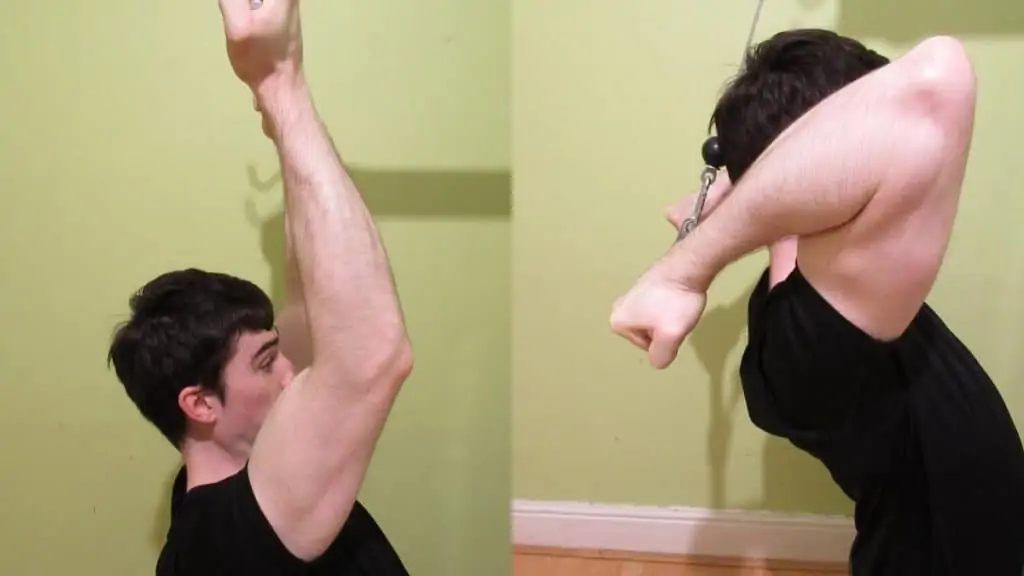
The shorter and more tensed up that you make a muscle, the stronger the peak contraction will feel, and the more of a pump you’ll generate. The catch is that most gym-goers have no idea what a fully shortened bicep looks like because they have a very limited understanding of human anatomy.
But if you don’t fancy hitting the books, I’ll share the key takeaways with you so that you can supercharge your mind-muscle connection.
Elbow flexion and forearm supination are the main bicep functions. However, the long head of the biceps also assists in shoulder flexion. When you perform these three functions simultaneously—like in a cable behind the neck curl—you get a fully shortened bicep, and thus, a maximally contracted bicep.
By getting strong where you’re meant to be weak (i.e., at fully shortened and fully lengthened muscle positions), you’ll gain muscle size and strength faster because now regular cable machine bicep exercises will feel easy because you’ve developed excellent proficiency in the most challenging bicep positions.
Great for supersets
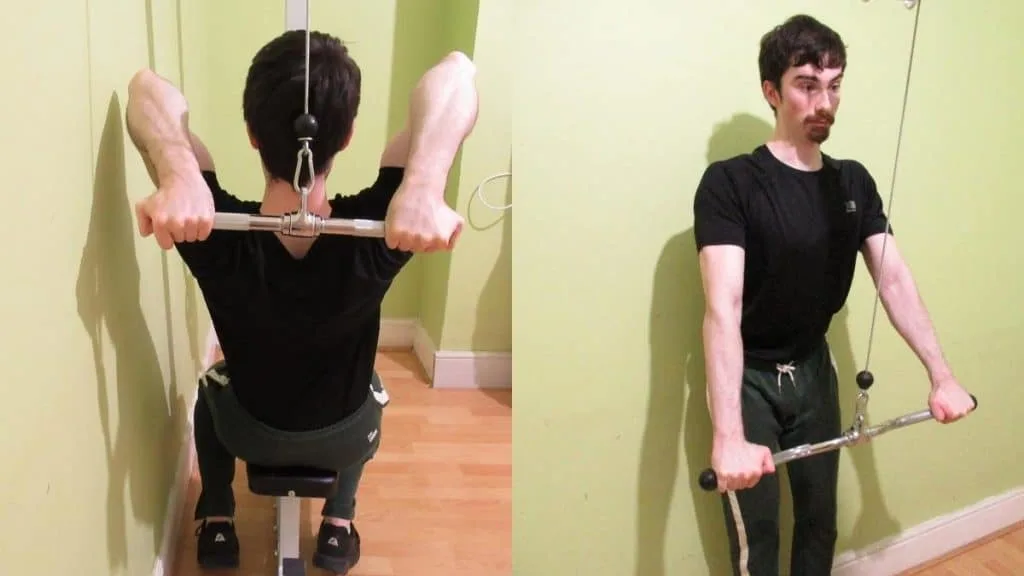
Training your biceps and triceps together is a smart way to save time and an equally effective method for getting the arm pump of your life—especially when you’re working them at shortened muscle lengths like we are here.
So why not do some pushdowns after doing your lat pulldown curls?
The cable is right there, so you might as well prolong your pump by pairing your bi and tri exercises together.
You could also do legs and biceps supersets to work your upper and lower body in one go. The only problem is that the leg exercises could make you a bit breathless and thus unable to perform as many reps as you usually would on your bicep work.
Simple setup
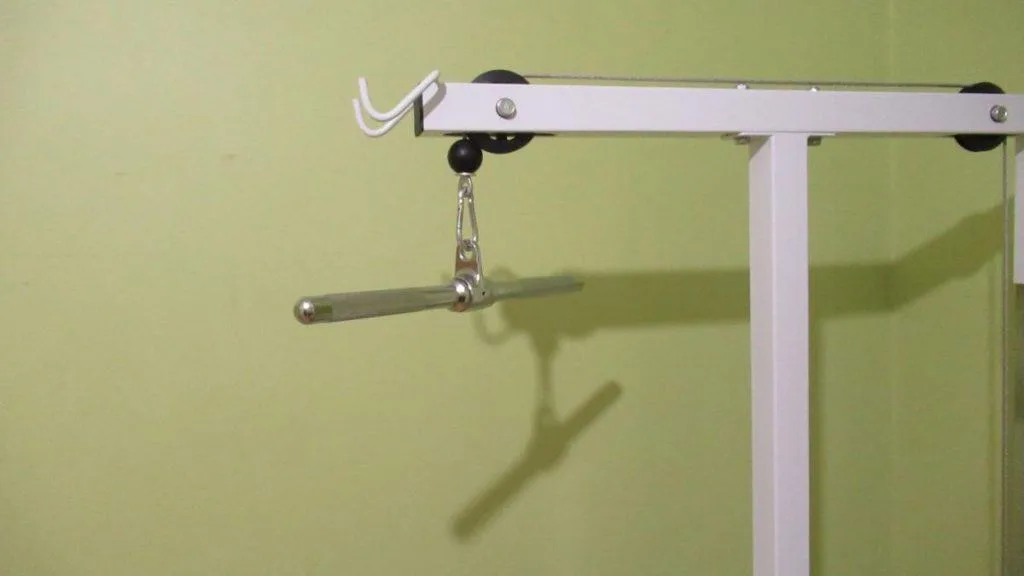
Many cable-based exercises for the biceps require you to wheel a bench and various other equipment up to a cable machine. As such, some of these exercises are simply not feasible in a busy fitness facility.
But every gym has a lat pulldown. The only other piece of equipment that you need to do a behind the neck cable curl is either a straight bar or an EZ bar (your choice).
And if the pulldown is taken, then you can simply use a regular high pulley station and perform the exercise kneeling down, which is what we’re going to discuss next.
Behind the head cable curl alternatives and variations
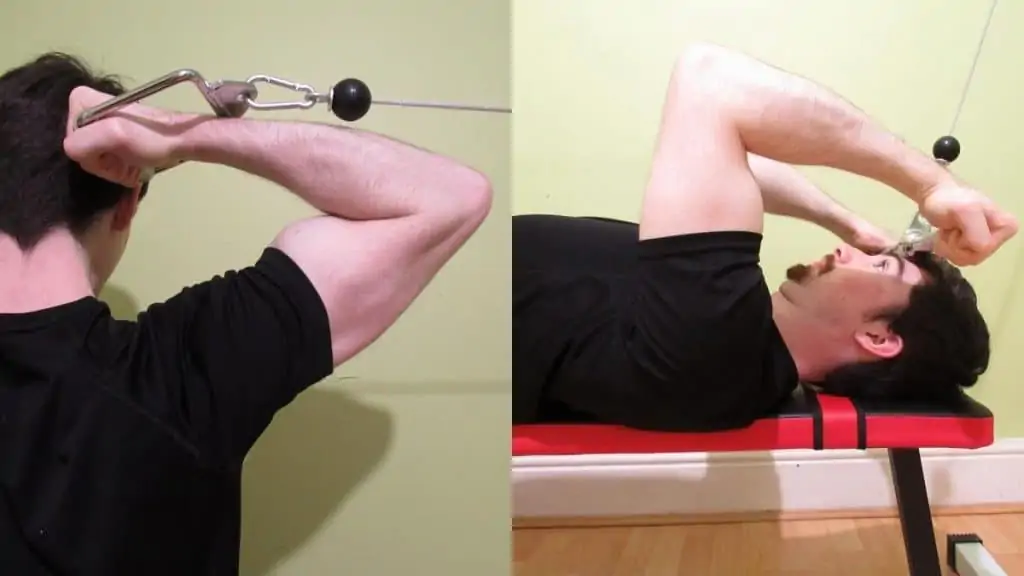
As mentioned, your best bet is to do the behind the head cable curl on a lat pulldown station because hooking your thighs under the pulldown pads helps to stabilize your core. This done-for-you stabilization, in turn, lets you focus 100% of your attention on blasting your biceps and making them grow.
But what if the pulldown machine is taken? You’re not going to wait around for 10 minutes while the other person finishes their sets.
Thankfully, the solution is relatively simple. By kneeling below a high pulley, grabbing the bar, and then curling it behind your head, you can enjoy the same intense contraction that you’d get from regular behind the head cable curls.
Plus, by doing them on a regular cable station, you’ll free up the pulldown for people who actually want to train their back.
If you want a complete alternative—an exercise that’s equally old school and which focuses on the peak contraction—then you can give drag cable curls a go next time you hit the gym. This movement has you attach a bar to a low pulley and then drag it up your body as you let your elbows travel behind your torso. It really burns the biceps and, as such, makes a great finisher after a heavy free-weight workout.
Are behind the head cable curls worth including in your routine?
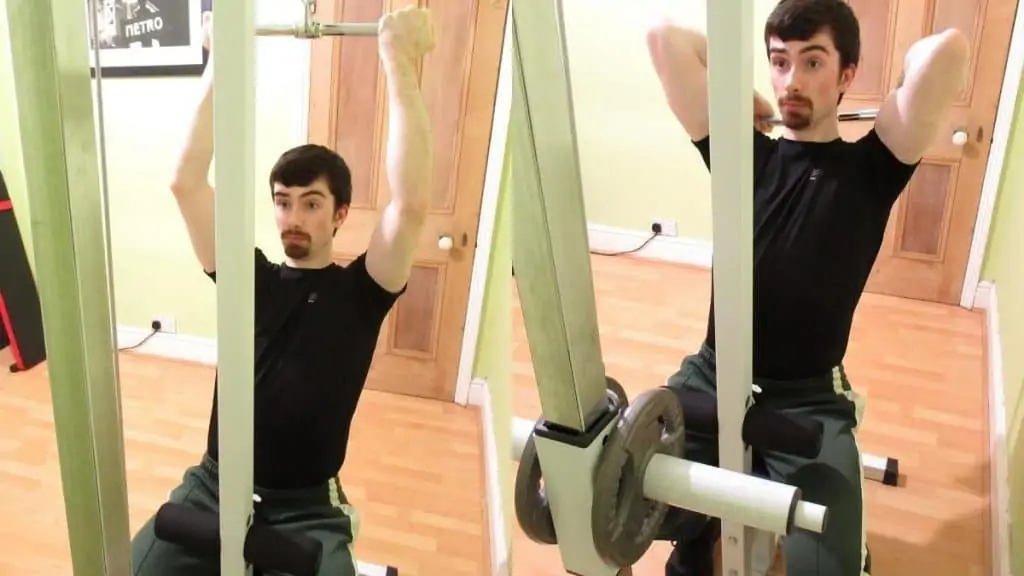
The cable behind the neck curl provides a bicep peak contraction that not many other exercises can replicate. This is so because the movement has you contract your biceps in their shortest anatomical position. So if you want to improve your mind muscle connection and pump up your biceps, then it’s definitely recommended to include lat pulldown curls in your workout program.
Overall, your best bet is to perform the behind the head cable curl during a high repetition bicep training routine so that you can keep the tension firmly on your biceps rather than getting tempted to jerk the weight down with your lats.
References
- Muscle Contractions | Learn Muscular Anatomy. (2021). Visible Body. https://www.visiblebody.com/learn/muscular/muscle-contractions
- Weakley, J. J. S., Till, K., Read, D. B., Roe, G. A. B., Darrall-Jones, J., Phibbs, P. J., & Jones, B. (2017). The effects of traditional, superset, and tri-set resistance training structures on perceived intensity and physiological responses. European Journal of Applied Physiology, 117(9), 1877–1889. https://doi.org/10.1007/s00421-017-3680-3

